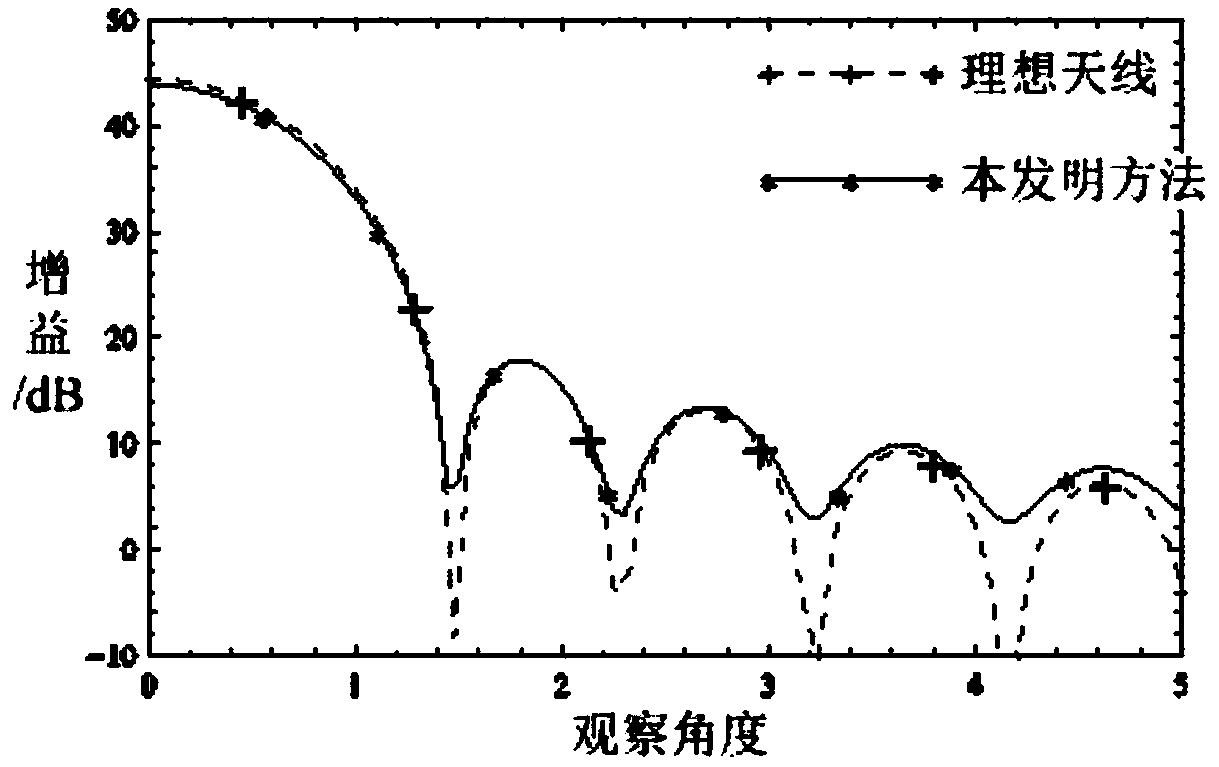Modeling method of average power pattern of umbrella antenna considering patch splicing error
An umbrella antenna, modeling method technology, applied in special data processing applications, instruments, electrical digital data processing, etc.
- Summary
- Abstract
- Description
- Claims
- Application Information
AI Technical Summary
Problems solved by technology
Method used
Image
Examples
Embodiment 1
[0078] The method for modeling the average power pattern of an umbrella antenna considering patch stitching errors includes the following steps:
[0079] Step 1, input the geometric parameters and electrical parameters of the umbrella antenna
[0080] Input the geometric parameters and electrical parameters of the umbrella antenna provided by the user; the geometric parameters include aperture, focal length, offset distance and number of ribs; the electrical parameters include operating wavelength, free space wave constant, feed parameters, feed primary pattern, and Electrical performance requirements including antenna gain, lobe width, sidelobe level, and pointing accuracy;
[0081] Step 2, calculate the optimal focal length of the umbrella antenna
[0082] According to the geometric parameters of the antenna provided by the user, the optimal focal length of the umbrella antenna is calculated according to the following formula:
[0083]
[0084] Among them, f s Indicate...
Embodiment 2
[0128] Such as figure 1 As shown, the present invention provides a method for modeling the average power pattern of an umbrella antenna considering patch stitching errors, comprising the following steps:
[0129] Step 1, input the geometric parameters and electrical parameters of the umbrella antenna
[0130] Input the geometric parameters and electrical parameters of the umbrella antenna provided by the user; the geometric parameters include aperture, focal length, offset distance and number of ribs; the electrical parameters include operating wavelength, free space wave constant, feed parameters, feed primary pattern, and Electrical performance requirements including antenna gain, lobe width, sidelobe level, and pointing accuracy;
[0131] Step 2, calculate the optimal focal length of the umbrella antenna
[0132] According to the geometric parameters of the antenna provided by the user, the optimal focal length of the umbrella antenna is calculated according to the follow...
PUM
| Property | Measurement | Unit |
|---|---|---|
| Caliber | aaaaa | aaaaa |
Abstract
Description
Claims
Application Information
 Login to View More
Login to View More - R&D
- Intellectual Property
- Life Sciences
- Materials
- Tech Scout
- Unparalleled Data Quality
- Higher Quality Content
- 60% Fewer Hallucinations
Browse by: Latest US Patents, China's latest patents, Technical Efficacy Thesaurus, Application Domain, Technology Topic, Popular Technical Reports.
© 2025 PatSnap. All rights reserved.Legal|Privacy policy|Modern Slavery Act Transparency Statement|Sitemap|About US| Contact US: help@patsnap.com



